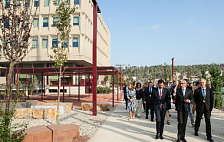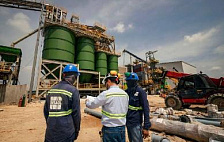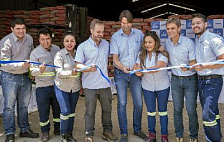The first trial melt has been completed as part of the innovative Cement 2 Zero project, which aims to develop the world’s first zero-emissions cement on an industrial scale.
Cement 2 Zero project is to use end of life cement as an electric arc furnace flux to produce steel, whilst also capturing the slag for use in the cement industry.
The collaborative project is seeking to advance the decarbonization of the construction, cement, and steel sectors by ensuring the process can be scaled up from laboratory to pilot plant.
The trial melt was carried out using the Materials Processing Institute’s 7-tonne electric-arc furnace (EAF) at its Teesside campus, which allowed team members to observe the process at a large scale.
Three further melts will be carried out using the Institute’s EAF and once substantially trialed, developed, and de-risked, a series of further industrial-scale trial melts will be held at CELSA’s electric-arc furnace in Cardiff.
The process was invented by Dr Cyrille Dunant at the University of Cambridge, who discovered that the chemical composition of used cement is virtually identical to that of the lime-flux used in conventional EAFs.
Cement 2 Zero uses recycled cement as the flux in the electric steel recycling process, the by-product of which when cooled and ground produces Portland cement clinker that can be blended to make ‘zero-emissions’ cement.
The pilot-scale EAF experiments use the flux material containing end-of-life recycled cement processed by Day Aggregates and international mining and minerals group LKAB, using a variety of scrap steel inputs provided by CELSA.
The EAF melts are being undertaken by the Institute in its Normanton Plant, with the support of Phillip Cartlidge from CELSA. This allows the team to embed large-scale steel recycling expertise into the pilot-scale experiments.
The testing of melt procedures and slag cooling offers a greater understanding of creating an end product that could be produced on an industrial scale, with Tarmac beginning the process of testing the new clinker to understand the grinding properties and assess key performance criteria of the new material.
The Cement 2 Zero project secured £6.5 million of government funding from UK Research and Innovation (UKRI) as part of the Transforming Foundation Industries challenge.








